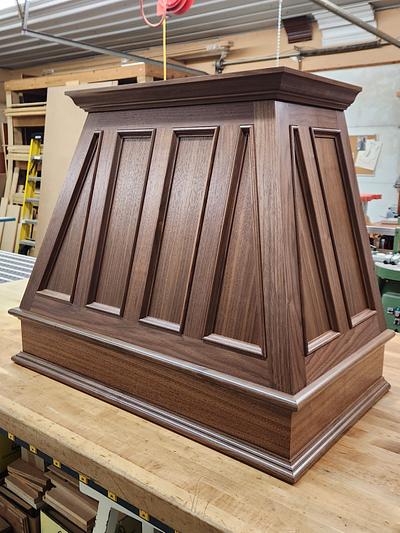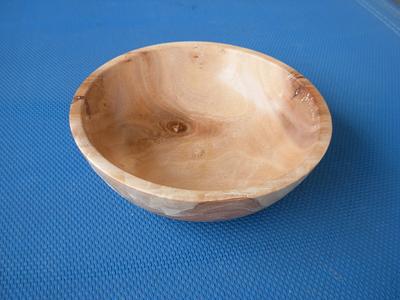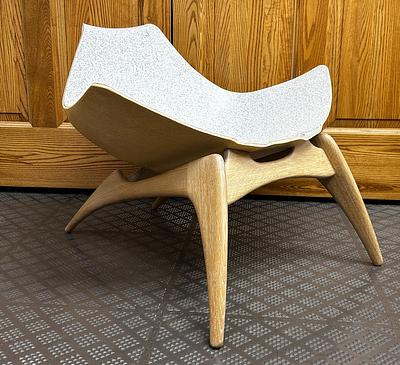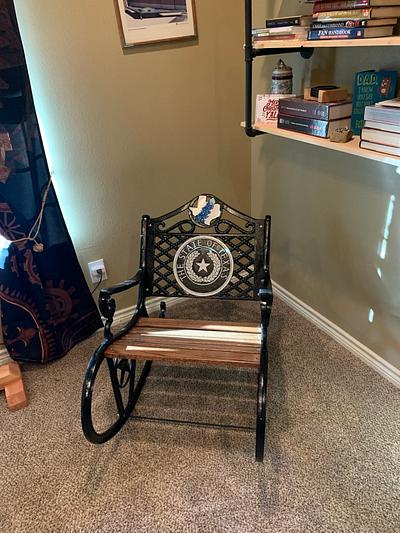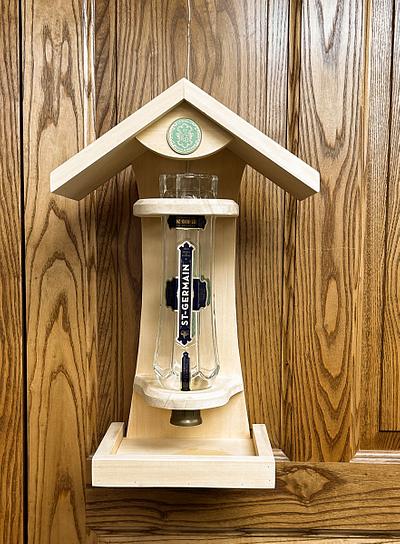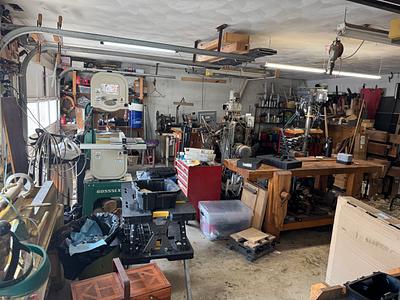Share your craft projects
Make new craft buddies
Ask craft questions
Blog your craft journey
Top 7 Metalworking Techniques Every Crafter Should Know
Metalworking is a fascinating mix of art and science, turning raw metal into stunning creations.
Whether you're crafting intricate sculptures or building essential structures, mastering metalworking techniques can really take your skills to the next level. This article dives into the top seven methods every crafter should know, including:
- Fabrication
- Welding
- Cutting
- Forging
- Casting
- Machining
- Finishing techniques
Each section will break down the unique processes involved, their applications, and share some tips to help you refine your craftsmanship. No matter if you’re just starting out or you’re a seasoned pro, there’s definitely something here for you!
What is Metalworking?
Metalworking is both an art and a science that lets you transform raw metal into functional or decorative objects using a variety of techniques and tools. It covers a wide range of processes like welding, forging, casting, and machining, giving you the creative freedom to tackle everything from simple repairs to intricate metal designs.
Understanding the properties of metal and choosing the right techniques is key to achieving precision and quality in your projects. Whether you’re a hobbyist or a professional, metalworking opens up a world of exciting creative possibilities that engage both your mind and hands in a rewarding craft that’s stood the test of time.
Dating back to ancient civilizations, metalworking has been crucial in shaping human history, driving advancements in tools and weaponry. Techniques like welding allow you to join metal pieces together using heat, while forging is all about shaping metal through force—showing just how much skill and strength this field requires. As a craftsman, you’ll use various tools like anvils, hammers, and torches, each offering unique capabilities for creating distinctive pieces.
But metalworking isn’t just about functionality; it’s also a way to express yourself through design. You can produce stunning sculptures, intricate jewelry, and customized decor that truly reflect your style. This blend of utility and creativity highlights the lasting allure of metalworking across cultures and eras.
Fabrication
Metal fabrication is all about creating metal structures or components using different techniques and tools, making sure you get precision and quality in every project.
You'll need to plan it out and have a well-equipped workbench, plus some jigs and fixtures to make the fabrication process smoother.
Whether you're whipping up custom metal pieces or tackling industrial projects, getting a grasp on fabrication techniques is crucial for hitting those optimal results.
Shaping and Manipulating Metal
Shaping and manipulating metal is a core part of metalworking that lets you use various tools and techniques to change the form of metal materials. Whether you're grinding or working on a lathe, these processes help you create the specific shapes and structures needed for your projects. Mastering the art of metal shaping not only boosts your craftsmanship but also opens up a world of possibilities for innovative metal design.
Grinding is essential for refining surfaces and getting that smooth finish, while machining uses precise cutting tools to remove material and create intricate designs. Lathes are your best friends when it comes to rotating materials, allowing for detailed shaping and perforation. Precision is key here; even the tiniest miscalculation can result in big flaws in your final product.
Using high-quality tools, like drills and saws, can really enhance your accuracy, so it's crucial to pick the right equipment for your specific needs. That meticulous attention to detail not only improves your finished piece but also elevates the overall artistry involved in metal fabrication.
Welding
Welding is a key process in metalworking that involves joining two or more metal pieces using different techniques like MIG welding, TIG welding, and oxy-acetylene welding. Each technique has its own set of advantages and applications, allowing you to create strong and durable joints in your projects.
It’s important to grasp the principles of metal joinery if you want to achieve high-quality welds and ensure that your final product holds up.
Joining Metals Together
Joining metals together is a crucial skill in metalworking, and you’ve got various methods at your disposal, like welding, brazing, and soldering, to create strong connections. When you understand these metal joinery techniques, you can ensure your projects are not just well-built but also tough enough to stand the test of time. If traditional methods aren’t cutting it, using fasteners can be a great alternative for joining metals.
Each method comes with its own perks and is suited for different applications. For example, welding gives you a permanent bond, making it perfect for heavy-duty structures. On the flip side, brazing works wonders for joining dissimilar metals without risking their integrity. Soldering? That’s your go-to for delicate components, like electrical connections, where you need to keep things cool with a lower temperature.
By mastering these techniques, you’ll boost the strength and durability of your projects, ensuring they last a long time and look reliable.
Cutting
Cutting is a key process in metalworking that lets you precisely remove material to get those perfect shapes and sizes you’re after.
You’ve got a bunch of methods to choose from, like plasma cutting, CNC machining, and even some good old traditional techniques, all aimed at boosting efficiency and accuracy in your projects.
Knowing the best cutting methods for different types of metal, whether it's tool steel or sheet metal, is super important if you want to nail that perfection in your work.
Methods for Cutting Metal
In terms of cutting metal, you've got a variety of techniques at your disposal, each tailored for different materials and project needs. Methods like plasma cutting, CNC machining, and shearing give you the flexibility and precision to tackle all sorts of cutting tasks effectively. Your choice of technique often hinges on the metal properties, like hardness and ductility, ensuring you get the best results.
For example, plasma cutting is a game-changer when you’re working with thick materials; it delivers high-speed cuts while keeping thermal distortion to a minimum. On the flip side, CNC machining shines when you need to create intricate designs and maintain tight tolerances—perfect for those complex components where precision is key. Shearing is great for sheet metal applications, giving you clean edges and efficient throughput.
Understanding how the characteristics of metals—like tensile strength and thermal conductivity—work with these cutting methods helps you pick the right approach, streamlining your workflow and improving your overall project outcomes.
Forging
Forging is this classic metalworking process where you heat metal until it’s nice and malleable, then hammer it into whatever shape you want. It really shows off the art of blacksmithing.
This ancient technique lets you create some pretty intricate designs while also making the metal stronger and more durable. When you grasp the principles of forging, you’re give the power toing yourself to make high-quality metal objects that can withstand the test of time.
Heating and Hammering Metal
Heating and hammering metal are essential techniques in forging, and getting a good grasp of metal properties and temperature control is key. When you use the right heating methods, the metal reaches that sweet malleable state, making it much easier to shape it through hammering. If you master these techniques, you’ll notice a big boost in your ability to create durable and visually stunning designs.
The temperature at which you heat metals is super important for their malleability. For instance, carbon steel should be heated to about 1,500°F for optimal workability. On the flip side, metals like copper and aluminum need different temperature settings, which not only affect how easily they bend but also their overall strength.
When you're hammering, maintaining consistent pressure and precise control helps create a finer grain structure, ultimately improving the integrity of your final product. This dance of heating and hammering not only strengthens what you’re forging but also lets you play around with intricate designs and artistic expression, showing off your skills in manipulating different metal properties.
Casting
Casting is a pretty amazing metalworking process where you get to create metal objects by pouring molten metal into molds. It's a great way to achieve intricate designs and shapes.
This method works especially well with metal alloys, which can really boost the properties of your final product. By understanding the different metal casting processes, you can elevate your skills and start creating unique and functional pieces that stand out.
Creating Metal Objects from Molds
Creating metal objects from molds is pretty fascinating, don’t you think? It’s all about casting, which lets you replicate intricate designs with impressive precision. The mold design is key here; it directly impacts the quality and detail of your final product.
By getting a good grasp of metal properties and casting techniques, you can craft durable and visually appealing objects that showcase your exceptional craftsmanship.
It all kicks off with picking the right materials for both the mold and the metal you'll be casting. This choice is crucial for achieving the physical characteristics you want, like strength and malleability. Depending on your design and the metal's properties, you might choose different casting methods, like sand casting or investment casting. Understanding thermal expansion is also super important since it affects how the metal behaves when you pour it into molds.
By mastering these relationships, you can not only boost the functionality of your creations but also elevate your artistic expression. Each piece you make can be both unique and structurally sound.
Machining
Machining is an essential process in metalworking, and it’s all about using different tools and techniques to shape and finish metal components with high precision. Think about methods like lathe operations, drilling with a drill press, and milling—these all play a big part in getting the results you want, whether it’s for function or looks.
By understanding the details of machining, you can really elevate your craftsmanship and create some outstanding metal objects.
Using Tools to Shape and Finish Metal
Using the right tools to shape and finish metal is key to getting those high-quality results you want in metalworking. Tools like lathes and grinders help you shape your pieces, while finishing tools like polishers give those metal objects a detailed and refined look. Getting the hang of these tools and their techniques is crucial if you’re aiming to up your craftsmanship game.
For example, lathes are a must-have for turning operations, allowing you to shape cylindrical components with precision, while grinders help you achieve that perfect surface finish and remove material to get exact dimensions.
On the finishing side, polishers are essential for bringing out the shine and smoothness in your metal pieces, making them look truly appealing.
Every tool has its own purpose, playing a vital role in the overall quality of your work. Understanding how to use them effectively can really boost the precision and durability of your final product. Mastering these techniques not only sharpens your skills but also builds your confidence in your creations.
Finishing Techniques
Finishing techniques in metalworking are crucial for boosting both the aesthetics and durability of your metal projects. Methods like polishing and surface treatments not only make the metal look great but also increase its resistance to wear and tear.
If you’re a metalworker who truly values craftsmanship and quality, mastering these finishing techniques is key to your success.
Adding Texture and Detail to Metal
Adding texture and detail to metal is super important when it comes to finishing. It’s what lets you create unique and eye-catching pieces.
By using a variety of techniques like etching, sandblasting, and anodizing, you can achieve cool surface characteristics that not only look great but also have practical benefits. For example, those etched patterns can help improve grip on tools and machinery, while anodized finishes boost corrosion resistance.
Each method gives different levels of shine and tactile feedback, allowing you to customize your creations to fit specific uses or your own style.
When you master these finishing techniques, you really enhance both the beauty and durability of your metalwork, making sure each piece is not just a work of art but also a reliable asset.
Frequently Asked Questions
What are the top 7 metalworking techniques every crafter should know?
The top 7 metalworking techniques every crafter should know are: welding, soldering, forging, casting, stamping, etching, and piercing.
The top 7 metalworking techniques every crafter should know are: welding, soldering, forging, casting, stamping, etching, and piercing.
Which metalworking technique is best for creating strong and durable joints?
Welding is considered the best metalworking technique for creating strong and durable joints. It involves melting and fusing two pieces of metal together to create a strong bond.
Welding is considered the best metalworking technique for creating strong and durable joints. It involves melting and fusing two pieces of metal together to create a strong bond.
Can you explain the difference between soldering and welding?
Soldering involves melting a soft metal alloy to join two pieces of metal together, while welding involves melting the actual metal pieces to create a bond. Welding is stronger and more permanent, while soldering is better for delicate or temporary connections.
Soldering involves melting a soft metal alloy to join two pieces of metal together, while welding involves melting the actual metal pieces to create a bond. Welding is stronger and more permanent, while soldering is better for delicate or temporary connections.
What is forging in metalworking?
Forging is a metalworking technique that involves heating and shaping metal using a hammer or press. This technique is often used for creating intricate designs and detailed shapes in metal.
How does casting differ from other metalworking techniques?
Casting is a metalworking technique that involves pouring molten metal into a mold to create a specific shape. It differs from other techniques in that it allows for more intricate and detailed designs to be created with ease.
Which metalworking technique is best for creating custom jewelry?
The metalworking technique best suited for creating custom jewelry is stamping. This technique involves pressing a design or pattern into metal using a stamp, allowing for unique and personalized jewelry pieces to be made.









